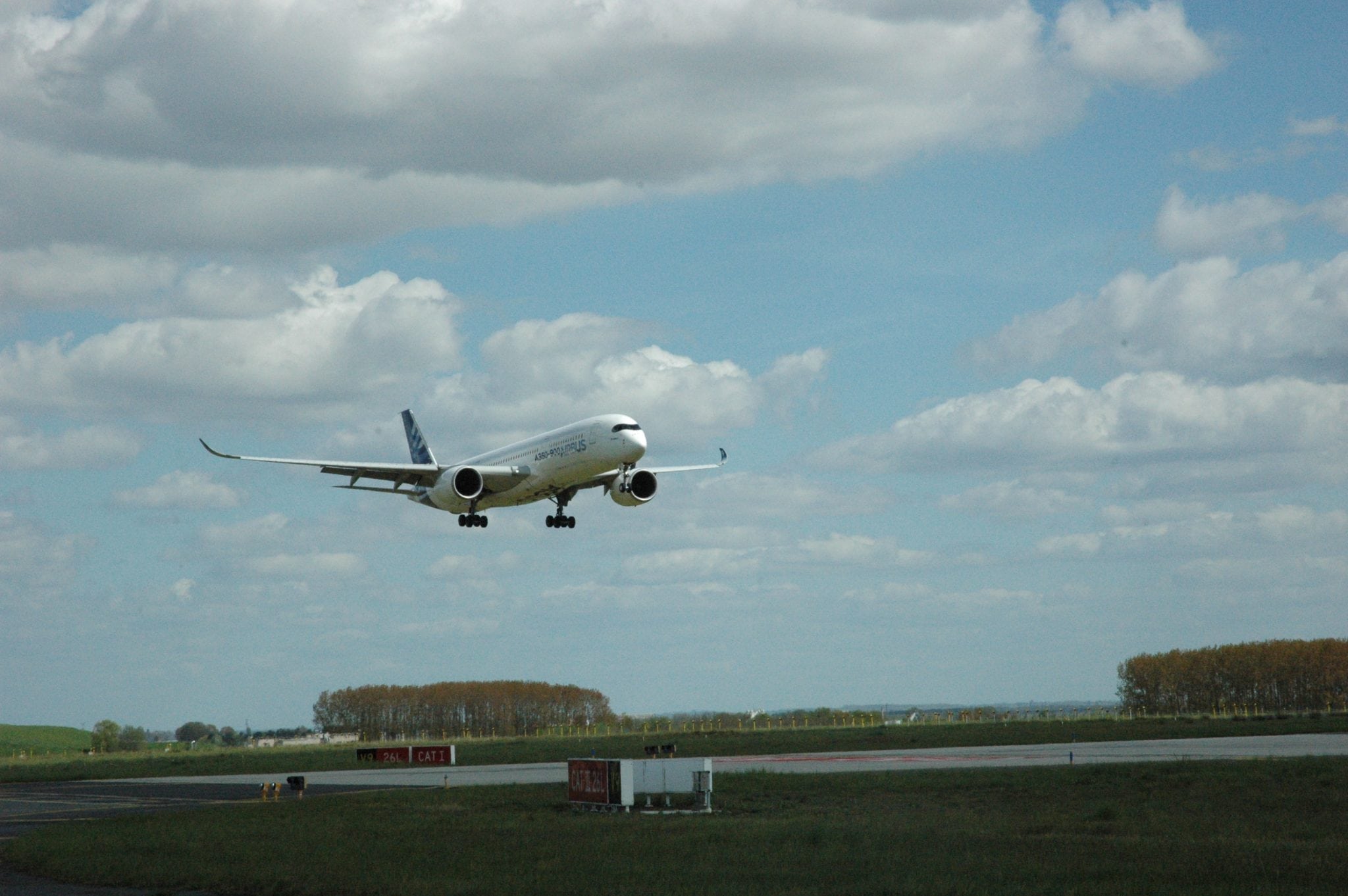[Avionics Magazine 05-09-2016] Europe has established its first Localizer Performance with Vertical guidance (LPV)-200 approaches at Charles de Gaulle Airport (CDG) in Paris, France, according to the European Global Navigation Satellite Systems (GNSS) Agency (GSA). The move to implant the first such European Geostationary Navigation Overlay Service (EGNOS)-based procedures at such a well-known airport is part of GSA’s plan to make the use of satellite-based navigation with EGNOS more widespread throughout Europe. The move is similar to the way the FAA has implemented Wide-Area Augmentation System (WAAS)-enabled procedures at U.S. airports throughout the National Airspace System (NAS).
 |
| Airbus A350 completes LPV 200 Approach at CDG. Photo: GSA. |
With validation flights performed by three of the largest European airframe manufacturers, the benefits of LPV 200 have already been proven across different operational categories. GSA refers to the EGNOS approaches as being “ILS look alike” because they provide pilots with the same type of navigation capabilities as a CAT I Instrument Landing System (ILS) approach without using the ground-based infrastructure needed for ILS approaches.
The EGNOS LPV-200 service level is compliant with International Civil Aviation Organization (ICAO) Annex 10 Category I precision approach performance requirements, according to GSA. Aircraft equipped with onboard EGNOS-enabled GNSS receivers are capable of flying LPV-200 approaches at airports where they have been deployed.
“The workload is exactly the same between ILS and LPV approaches. The integration of the approaches (LPV and ILS) in the Flight Management System (FMS) is optimized to have a minimum workload,” Jean Louis Dumas, a flight test pilot with Dassault said in a statement following the completion of a trial LPV-200 flight using a Dassault Falcon EASY cockpit.
“The accuracy of the impact point on the runway is really impressive: less than one foot laterally. The flight director in vertical is very stable during all the approach and the [Auto Pilot] AP disconnection can be selected at 30 feet. With this accuracy of the guidance, we can anticipate lower minima’s in the future if the GNSS signal is at a good level of reliability,” said Dumas.
EGNOS is a network of 40 reference stations in more than 20 countries throughout Europe that pick up signals from GPS satellites that are then processed in Master Control Centers (MCCs). GSA first announced certification of the network for use in civil aviation in 2011. However, usage of the system by commercial and general aviation operators throughout Europe up until last year had been relatively low. In 2015, GSA worked with other aviation stakeholders throughout Europe to increasingly lead further deployment, trials and EGNOS procedures at more airports.
Unlike GPS, EGNOS provides integrity of signal, increased accuracy, coverage and a service-level agreement. This makes it suitable to provide a number of navigation services. For the most common applications, EGNOS gives a positioning accuracy of 1 to 3 meters, according to GSA.
GSA first announced the availability of LPV-200 based approaches, lowered from LPV-250, in September 2015, but the implementation at Paris CDG is the first large scale deployment of the new approaches at a major international airport in Europe. Mauric Georges, CEO of DSNA, the Air Navigation Service Provider (ANSP) for France, said the agency is going to look to progressively deploy LPV-200 approach procedures to more Instrument Flight Rules (IFR) runways throughout France in coming years.
“With the LPV, pilots can use GPS navigation during all phases of approach. This means pilots do not have to switch between autopilot modes while preparing the approach, and hence our workload is reduced. For instance, LPV system allows pilots to prepare the approach (select and set the course and the frequency) faster and without switching equipment, whereas with the ILS human errors are possible,” Eric Delesalle, chief pilot for ATR, said in a statement released by GSA following the completion of the flight trials in Paris.
Currently, EGNOS is providing GPS augmentation for civil aviation at more than 150 airports in Europe, and the agency has a goal of pushing that number to 440 airports by 2018. Already, GSA has confirmed Vienna International (LOWW) as the next airport that will publish LPV 200 procedures.